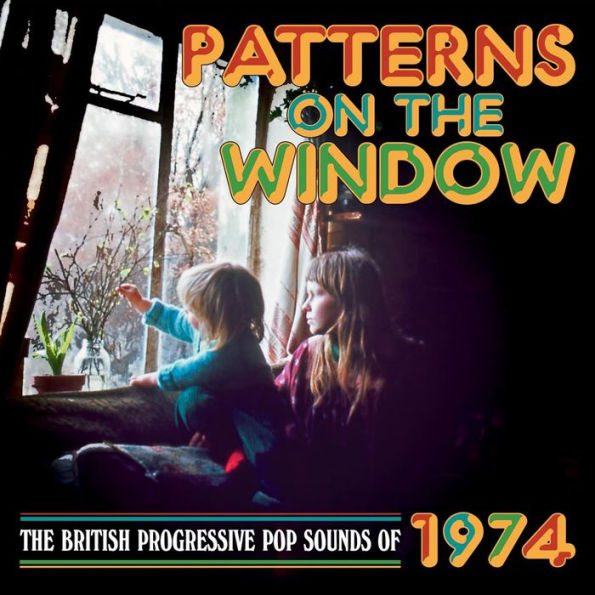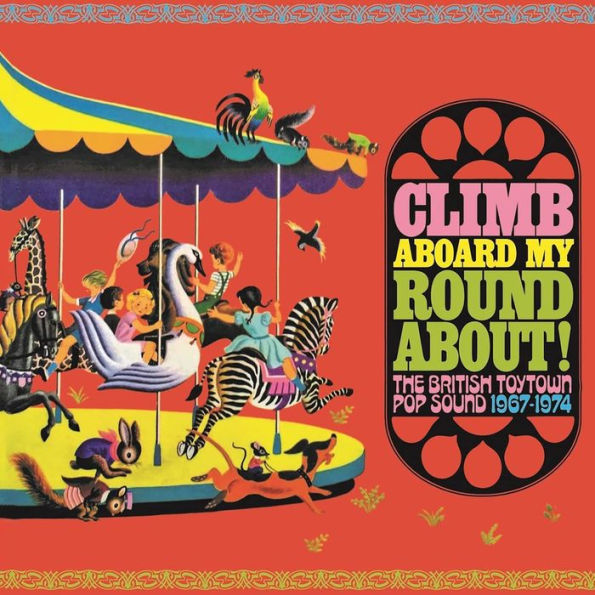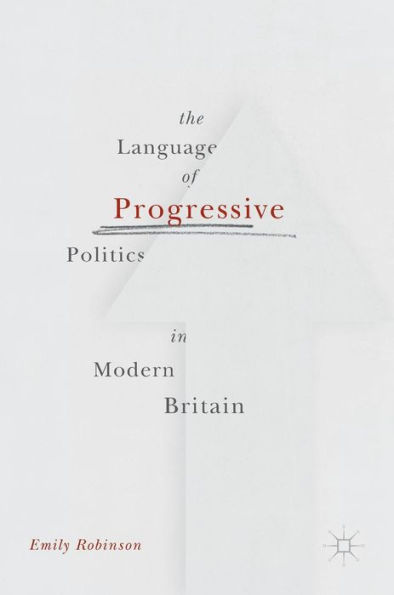Home
Patterns on the Window: The British Progressive Pop Sounds of 1974
Barnes and Noble
Loading Inventory...
Patterns on the Window: The British Progressive Pop Sounds of 1974 in Bloomington, MN
Current price: $34.99


Patterns on the Window: The British Progressive Pop Sounds of 1974 in Bloomington, MN
Current price: $34.99
Loading Inventory...
Size: OS
Patterns on the Window
continues
Grapefruit Records
' year-by-year collection of notable, obscure, and ubiquitous moments of rock & roll's ongoing transformation, this time zooming in on the vibrant sounds of 1974. Like so many of the compilations in this format, this three-disc, 67-track digest is exhaustively colorful, and succeeds by arranging relatively unknown artists alongside the bigger names of glam rock, radio staples, orchestral pop, and what was slowly transitioning into soft rock and folk-informed sounds by 1974.
kicks off with
Roxy Music
's leading man
Bryan Ferry
in a rousing take on "The 'In' Crowd," pushing the
Motown
-era dance track somewhere new with synths, driving drums, and his patented vocal theatrics. Along with tracks from other more recognizable names like
Sparks
,
Procol Harum
Rod Stewart
T. Rex
, and
Thin Lizzy
, the lengthy compilation also offers songs by equally impressive artists who didn't reach the same levels of fame. The
Bowie
-isms of the
Mick Ronson
track "Billy Porter" are no surprise, but it is interesting to hear how strong the tune is in all its post-
Ziggy Stardust
weirdness, and how its rugged vocals and angled melodies predict the very beginnings of punk and new wave. There's also representation of the emerging pub rock scene from
Brinsley Schwarz
Dr. Feelgood
, and others.
Bridget St. John
's "Curious and Woolly,"
Iain Matthews
' rootsy "Poor Ditching Boy," and the
Richard & Linda Thompson
rave-up "When I Get to the Border" are all examples of traditional folk sounds working their way into the electric rock landscape by 1974. In part, it's these explorations of softer tones that makes
one of the more interesting chapters of the series. While all the volumes that came before it do a great job of showing the spectrum of styles that fell under the banner of adventurous pop during any given year, that spectrum widens somewhat here, with ideas and reflections that seem lightyears away from the blues-derived progressive rock that was happening just a year or two earlier. ~ Fred Thomas
continues
Grapefruit Records
' year-by-year collection of notable, obscure, and ubiquitous moments of rock & roll's ongoing transformation, this time zooming in on the vibrant sounds of 1974. Like so many of the compilations in this format, this three-disc, 67-track digest is exhaustively colorful, and succeeds by arranging relatively unknown artists alongside the bigger names of glam rock, radio staples, orchestral pop, and what was slowly transitioning into soft rock and folk-informed sounds by 1974.
kicks off with
Roxy Music
's leading man
Bryan Ferry
in a rousing take on "The 'In' Crowd," pushing the
Motown
-era dance track somewhere new with synths, driving drums, and his patented vocal theatrics. Along with tracks from other more recognizable names like
Sparks
,
Procol Harum
Rod Stewart
T. Rex
, and
Thin Lizzy
, the lengthy compilation also offers songs by equally impressive artists who didn't reach the same levels of fame. The
Bowie
-isms of the
Mick Ronson
track "Billy Porter" are no surprise, but it is interesting to hear how strong the tune is in all its post-
Ziggy Stardust
weirdness, and how its rugged vocals and angled melodies predict the very beginnings of punk and new wave. There's also representation of the emerging pub rock scene from
Brinsley Schwarz
Dr. Feelgood
, and others.
Bridget St. John
's "Curious and Woolly,"
Iain Matthews
' rootsy "Poor Ditching Boy," and the
Richard & Linda Thompson
rave-up "When I Get to the Border" are all examples of traditional folk sounds working their way into the electric rock landscape by 1974. In part, it's these explorations of softer tones that makes
one of the more interesting chapters of the series. While all the volumes that came before it do a great job of showing the spectrum of styles that fell under the banner of adventurous pop during any given year, that spectrum widens somewhat here, with ideas and reflections that seem lightyears away from the blues-derived progressive rock that was happening just a year or two earlier. ~ Fred Thomas
Patterns on the Window
continues
Grapefruit Records
' year-by-year collection of notable, obscure, and ubiquitous moments of rock & roll's ongoing transformation, this time zooming in on the vibrant sounds of 1974. Like so many of the compilations in this format, this three-disc, 67-track digest is exhaustively colorful, and succeeds by arranging relatively unknown artists alongside the bigger names of glam rock, radio staples, orchestral pop, and what was slowly transitioning into soft rock and folk-informed sounds by 1974.
kicks off with
Roxy Music
's leading man
Bryan Ferry
in a rousing take on "The 'In' Crowd," pushing the
Motown
-era dance track somewhere new with synths, driving drums, and his patented vocal theatrics. Along with tracks from other more recognizable names like
Sparks
,
Procol Harum
Rod Stewart
T. Rex
, and
Thin Lizzy
, the lengthy compilation also offers songs by equally impressive artists who didn't reach the same levels of fame. The
Bowie
-isms of the
Mick Ronson
track "Billy Porter" are no surprise, but it is interesting to hear how strong the tune is in all its post-
Ziggy Stardust
weirdness, and how its rugged vocals and angled melodies predict the very beginnings of punk and new wave. There's also representation of the emerging pub rock scene from
Brinsley Schwarz
Dr. Feelgood
, and others.
Bridget St. John
's "Curious and Woolly,"
Iain Matthews
' rootsy "Poor Ditching Boy," and the
Richard & Linda Thompson
rave-up "When I Get to the Border" are all examples of traditional folk sounds working their way into the electric rock landscape by 1974. In part, it's these explorations of softer tones that makes
one of the more interesting chapters of the series. While all the volumes that came before it do a great job of showing the spectrum of styles that fell under the banner of adventurous pop during any given year, that spectrum widens somewhat here, with ideas and reflections that seem lightyears away from the blues-derived progressive rock that was happening just a year or two earlier. ~ Fred Thomas
continues
Grapefruit Records
' year-by-year collection of notable, obscure, and ubiquitous moments of rock & roll's ongoing transformation, this time zooming in on the vibrant sounds of 1974. Like so many of the compilations in this format, this three-disc, 67-track digest is exhaustively colorful, and succeeds by arranging relatively unknown artists alongside the bigger names of glam rock, radio staples, orchestral pop, and what was slowly transitioning into soft rock and folk-informed sounds by 1974.
kicks off with
Roxy Music
's leading man
Bryan Ferry
in a rousing take on "The 'In' Crowd," pushing the
Motown
-era dance track somewhere new with synths, driving drums, and his patented vocal theatrics. Along with tracks from other more recognizable names like
Sparks
,
Procol Harum
Rod Stewart
T. Rex
, and
Thin Lizzy
, the lengthy compilation also offers songs by equally impressive artists who didn't reach the same levels of fame. The
Bowie
-isms of the
Mick Ronson
track "Billy Porter" are no surprise, but it is interesting to hear how strong the tune is in all its post-
Ziggy Stardust
weirdness, and how its rugged vocals and angled melodies predict the very beginnings of punk and new wave. There's also representation of the emerging pub rock scene from
Brinsley Schwarz
Dr. Feelgood
, and others.
Bridget St. John
's "Curious and Woolly,"
Iain Matthews
' rootsy "Poor Ditching Boy," and the
Richard & Linda Thompson
rave-up "When I Get to the Border" are all examples of traditional folk sounds working their way into the electric rock landscape by 1974. In part, it's these explorations of softer tones that makes
one of the more interesting chapters of the series. While all the volumes that came before it do a great job of showing the spectrum of styles that fell under the banner of adventurous pop during any given year, that spectrum widens somewhat here, with ideas and reflections that seem lightyears away from the blues-derived progressive rock that was happening just a year or two earlier. ~ Fred Thomas


















